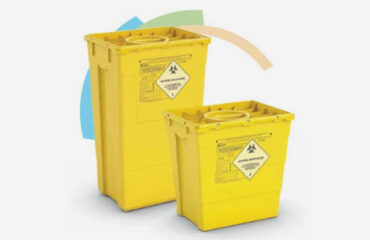The Of Reclaim Waste
The Of Reclaim Waste
Blog Article
Things about Reclaim Waste
Table of ContentsAbout Reclaim WasteAn Unbiased View of Reclaim WasteReclaim Waste Can Be Fun For AnyoneThe Ultimate Guide To Reclaim WasteSome Known Incorrect Statements About Reclaim Waste
Domestic sewer waste refers to the waste and items from a domestic septic container. The appropriate management and disposal of residential sewer waste need fluid waste to be transferred to a sewer therapy plant where the correct methods and devices are applied to detoxify and dispose of waste.
Commercial waste often consists of possible hazards, such as combustible products or a blend of fluid and solid waste items, and calls for a more innovative and in-depth disposal procedure. The disposal of business waste commonly involves the filtration of waste prior to transport to ensure safe and appropriate disposal. Hazardous waste is created from by-products and drainage of commercial processes and production.
This type of waste can not utilize the same sewer management transportation or processes as septic or business fluids. The hazardous waste management process needs the assessment and testing of liquid waste before it undergoes the disposal process (liquid waste removal melbourne). Overflow waste is the liquid waste that originates from runoff and excess stormwater in extremely populated locations or cities
Drainage waste can cause contamination and flooding if not handled correctly. Making sure appropriate waste management can prevent disasters and lower ecological harm.
The Reclaim Waste PDFs
Contact PROS Solutions today to find out about our waste management and disposal solutions and the appropriate means to care for the fluid waste you create.
(https://www.provenexpert.com/reclaim-waste/)Do you recognize what takes place to your water when you disengage, flush the bathroom or drain pipes the washing maker? No? Well, it's worth recognizing. This so-called 'wastewater' is not only a crucial resource yet, after treatment, will certainly be released to our land, rivers or the sea. Used water from commodes, showers, baths, kitchen area sinks, laundries and industrial procedures is called wastewater.

water utilized to cool down machinery or clean plant and equipment). Stormwater, a type of wastewater, is runoff that streams from agricultural and city locations such as roofing systems, parks, yards, roads, courses and gutters right into stormwater drains, after rain. Stormwater moves without treatment directly to regional creeks or rivers, at some point reaching the sea.
Indicators on Reclaim Waste You Should Know
In Queensland, many wastewater is treated at sewage therapy plants. Wastewater is delivered from residential or industrial sites with a system of drains and pump terminals, referred to as sewerage reticulation, to a sewage treatment plant. City governments construct, keep and operate most sewage therapy plants. Operators are accredited under the Environmental Management Act 1994 to discharge treated wastewater at an acceptable environmental requirement into rivers.
The Department of Natural Resources recommends regional governments about handling, operating and keeping sewage systems and treatment plants. In unsewered locations, city governments might need householders to install specific or family sewer treatment systems to treat domestic wastewater from toilets, cooking areas, shower rooms and laundries. The Division of Natural Resources authorizes the usage of household systems when they are proven to be reliable.
A lot of stormwater receives no treatment. In some new communities, treatment of some stormwater to eliminate litter, sand and crushed rock has begun making use of gross contaminant traps. Wastewater therapy happens in four phases: Removes strong matter. Bigger solids, such as plastics and other objects wrongly discharged to drains, are removed when wastewater is gone through displays.
Uses little living organisms understands as micro-organisms to damage down and get rid of staying dissolved wastes and great fragments. Micro-organisms and wastes are incorporated in the sludge.
Unknown Facts About Reclaim Waste
Nutrient removal is not available at all sewer therapy plants since it calls for pricey specialist devices. Clear liquid effluent created after treatment might still have disease-causing micro-organisms - liquid waste removal melbourne.

The majority of websites wastewater moves into the sewage system. Under the Act, local governments carry out approvals and permits for environmentally relevant activities (Periods) including wastewater releases that may have a local effect.
Some Of Reclaim Waste
Or else, examples are considered lab analysis. Often numerous tests are needed to establish the degrees of each of the various pollutants such as oils, heavy metals and pesticides in water. Tracking provides factual information regarding water quality and can verify that permit conditions are being satisfied. The information obtained with surveillance gives the basis for making water high quality choices.
Report this page